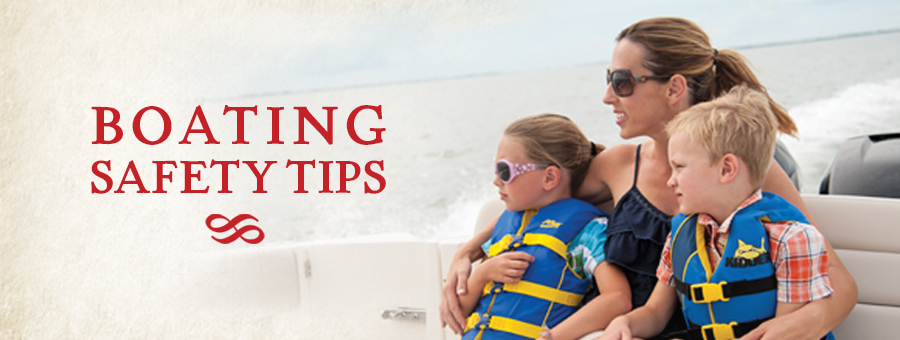From experienced BoatUS staff
Always overdress, you can always take clothing off and weather conditions on the water are usually different than on land. -Dennis Rosen (50 year boater, 40 year sailor of small boats)
Go slow, particularly when docking, and you’ll look like a pro. Slow is pro! -Ted Sensenbrenner (30 years near shore fisherman and off – shore sailor)
If you are using a boat launch ramp, have a plan in place to put the boat in and out of the water as quickly as possible. You don’t want to be the person who hogs the launch ramp. -Scott Croft (Inshore sail and power boat owner (Hudson & Potomac Rivers) for 20 years
Be sure to bring lots of snacks and water. Everyone is happier (especially kids) when they are well fed and extra water aboard is never a bad idea. -Susan Shingledecker (30 years experience on small and large sailboats, cruising and racing, kayaks, SUPS and powerboats too!)
Don’t overload your boat.
-Debbie Schaefer (Seventeen year sail boat owner. Sailed on the Chesapeake and Potomac rivers.)
Before heading out on the water place things like cell phones, keys, wallets, etc in a waterproof bag or zip lock. -Sonja Lowe (Boating on “other people’s boats” for 20 years. Current boat – 14-ft canoe)
Make sure another person on your vessel knows how to drive or how to hail for help in case of an emergency. -Heather Sheward (Been on boats since I was 5 days old and never stopped. Also Manager of our VHF operations.)
Make sure that your anchor rode and chain are not tangled prior to going offshore. This ensures fast deployment in the case of an emergency. -Shawn Landin (Avid offshore boater and Operations Manager of the California Service Center)
When it’s time for repairs on your boat, use marine grade parts – they’ll last longer and in some places, like the engine, they’re necessary to prevent a dangerous condition. -Charles Fort (Liveaboard sailor – powerboating, sailing, and kayaking since 1968.)
Keep a boating journal. It’ll come in handy later. -John Bratten (Lower Chesapeake Bay Native/ Boater)
Boating is fun but can be disorienting. Have a plan. Know your geographic landmarks, pay attention to headings and be knowledgeable of your GPS functions. -Joseph Medeiros (Previous Captain of TowBoatUS vessels in Southern California, Supervisor of VHF operations.)
Leave a “Float Plan” with someone on-shore, and go over details of the boat and what to expect on the trip with your guests. It will make for a more enjoyable trip. -Chris Edmonston (Classroom instructor for CG Auxiliary, and on-water Master Instructor for National Safe Boating Council)
Check the weather early and often and don’t be afraid to cancel/change your plans. Staying ashore wishing you had gone is far better than going and wishing you hadn’t.”-Peter Minners (35 year boater currently owns 2 boats, occasional charter and former racing sailor)
When backing up a trailer put your hand at the bottom of the wheel 6 o’clock position). The direction that you turn the wheel is the direction that the trailer is going to go. -Mike Pellerin (35 years on the water)
Make sure before you go that your boat has all the Federal, State & Local required safety equipment aboard and that they are all up to date and in good working order. -Jim Holler (Owned and operated boats on many of the waterways in the across US and Canada over the past 45 years.)
Take fully charged handheld VHF on every trip. You never know when you’ll need it. Also, Find a life jacket that is comfortable and that you like. You’ll be more apt to wear it more frequently.-Margaret Podlich (Long time sailor and small power boater)
When heading out for a day on the water, be sure to bring skin protection such as sunscreen and a “buff”. Nothing can ruin a weekend of beautiful weather like getting bad sunburn. -Dustin King (14 years competitive fishing / 17 years a boater)
When starting to sail in a small sailboat, first practice capsizing and righting, then it won’t be a concern again. -Claire Wyngaard (Force 5 Sailor)
When going out for a day sail always try to sail into the wind when going out while you’re still fresh, you’ll be glad you did when you sail back with the wind behind you and you’re dog tired. -Dennis Rosen (50 year boater, 40 year sailor of small boats)
Know the time and heights of high and low tides before you head out. It is often key to know when “to go or not to go” in and out of an ocean inlet or a tributary. It may also assist you to avoid groundings during low tide in unmarked areas. -Jerry Cardarelli (Boating since 1979. Owned Powerboats up to 34′. Owned and crewed on Sailboats up to 41′.)
One Hand for you, One hand for the boat; this simple phrase said over and over again by my granddad guarantees that you’ll stay reasonably upright and in the boat so you can better enjoy your day out on the water. -John Adey (President American Boat & Yacht Council)


